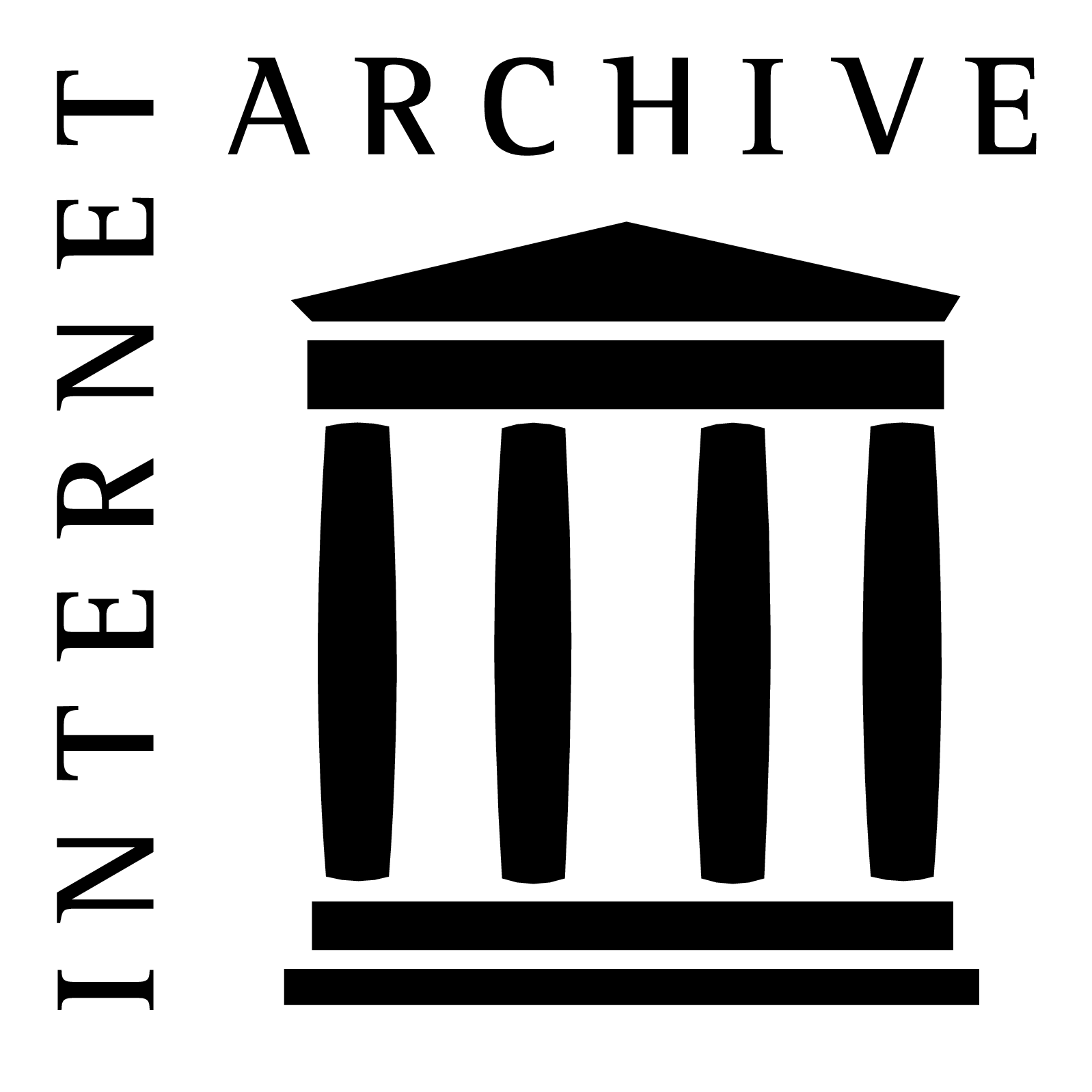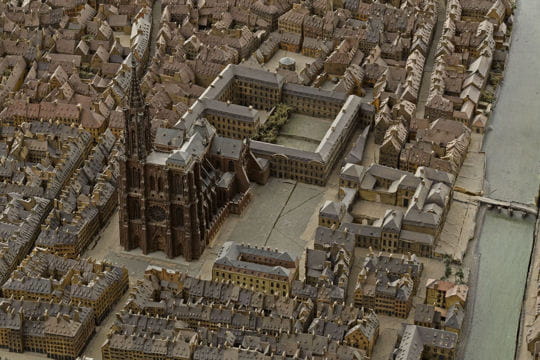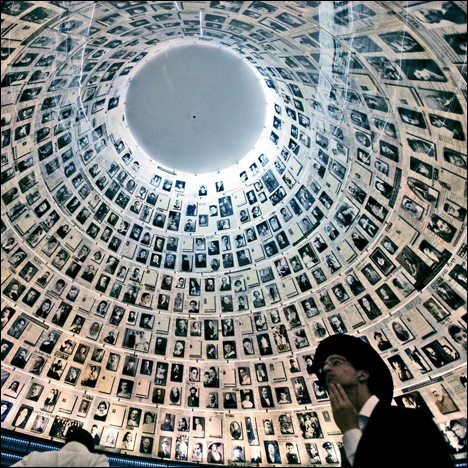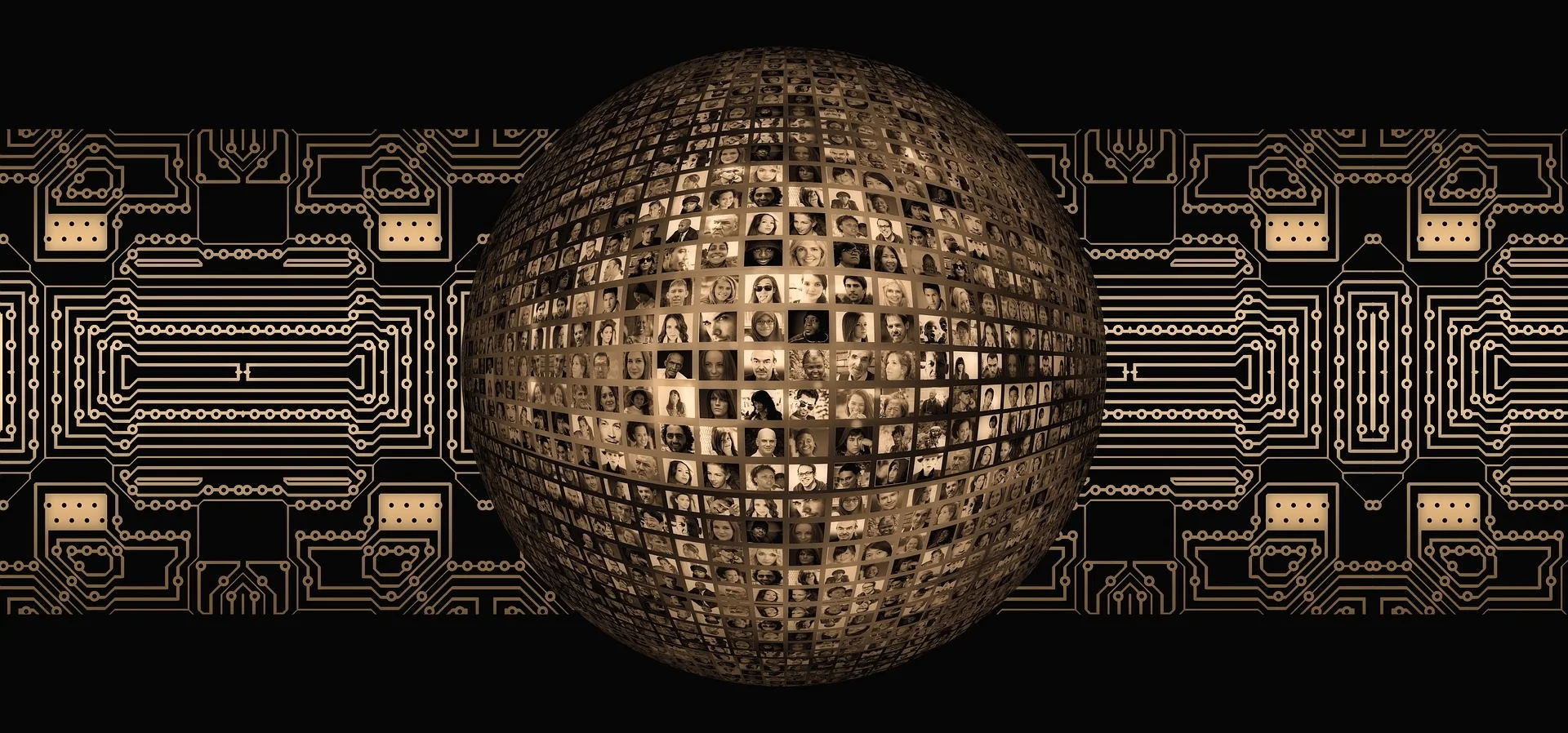AMT Lab will be taking a break from now until September. Click here to meet the incoming chief editor of research and catch some highlights from the year.
Uninterrupted Research: Advancing the Digitization of Archives
Digital Humanities: Library of Congress Labs Opens Collections for Productivity and Play
Archives generally are expected to be places of preservation and documentation, as opposed to innovative research. However, the Library of Congress, America’s oldest archive, just recently unveiled a virtual laboratory space to promote experimental research and creative uses for their aged collections.
Creative Crowdsourcing: How the Smithsonian Turned Data Entry into Engagement
Museum collections, specifically archives, in arts and research institutions are frequently viewed negatively partially because their upkeep is expensive and complicated, taking over precious work-hours for an already overworked staff. The Smithsonian Institution's ongoing operation of a Digital Transcription Center demonstrates that this upkeep can be accomplished in a cost-saving and engaging way.
What About E-mail
#TBT: The Web-Based Arts Experience
When discussing the future of the arts, many professionals and studies have stated that the manner in which audiences consume arts and culture is rapidly changing--and has already changed. The Internet has been the most notable new space for consuming culture, providing both opportunities and challenges through widespread and instant information sharing. Over the past several years, AMT Lab has documented the various web-based arts experiences that are becoming readily available--usually including lessons and best practices that managers can take away for their own practice. This week’s TBT rounds them up into a user-friendly toolbox of online arts experiences of various artistic mediums.
Cultural Preservation: Future Concerns, Trends, and Hypotheses
 The numerous civilizations of the past left behind numerous tangible traces of their heritage. Coveted or discarded, scattered or buried, broken or intact, these objects would soon become artifacts. Archeologists would study them, museums would acquire them, and the rest is none other than History. But what happens when the core activities of a civilization leave scarce amounts of tangibles? What happens when the pace of change is faster than that of preservation? We should start formulating a response, for this describes none other than the 21st century.
We live in an age of information, of which a substantial amount now exists online, but is constantly in flux. The Economist described this phenomenon in an article titled History Flushed, where the author argues that archivists are limited in their activities of digital preservation due to anti-piracy legislation and software such as Digital Rights Management.
The numerous civilizations of the past left behind numerous tangible traces of their heritage. Coveted or discarded, scattered or buried, broken or intact, these objects would soon become artifacts. Archeologists would study them, museums would acquire them, and the rest is none other than History. But what happens when the core activities of a civilization leave scarce amounts of tangibles? What happens when the pace of change is faster than that of preservation? We should start formulating a response, for this describes none other than the 21st century.
We live in an age of information, of which a substantial amount now exists online, but is constantly in flux. The Economist described this phenomenon in an article titled History Flushed, where the author argues that archivists are limited in their activities of digital preservation due to anti-piracy legislation and software such as Digital Rights Management.
“As companies more fiercely protect their wares, contemporary digital artefacts run the risk of never being archived. Libraries have no mandate to collect apps, such as Angry Birds or Instagram, which form part of popular culture.”
In the same article, the author mentions how efforts are being made by governmental archives in the UK and the US, and non-profits like the Internet Archive. The latter is a truly comprehensive internet library that was founded in 1996 and has since become a vast collection of “texts, audio, moving images, and software as well as archived webpages.” With so much of our culture now in digital format, will there be a shift in the responsibility of preservation, one from our museums to organizations specializing in digital archiving?
Yes, I believe so. Because our digital footprints are becoming bigger and more pronounced. And this seemingly unimaginable amount of information, along with our technologies and software, will most likely be preserved by various non-museum organizations; from tech giants like Google, to nonprofits like the Internet Archives, and even individuals (take a look at the Museum of Sounds).
So what of our museums? In a recent post on museum geek, Susie Cairns asked this very question. She wondered whether the plight of newspapers, and their subsequent shift towards digital content, heralds a change in museology. Especially in the way culture is preserved;
“Now is that time for museums. We still need the things that museums do. We still need to know how to select, preserve and disseminate, whether objects or information. What we don’t need is museums. If those same needs can be met by other means (digital or otherwise), the impact on museums will be significant. I think it’s important to keep this in mind as we look to the future, particularly as we see the effects of the Internet on other traditional institutions.”
While I agree with her to a certain extent, it's difficult to imagine a museum free future. The internet has definitely made it easier for us to access information about an object, but not the object itself. And even if the object can somehow be experienced remotely, it will still exist and so will the museum. Yet I can see how a technology such as augmented reality (or something not yet developed) may further separate the preservation of an object from the dissemination of its meaning to audiences. So much so that people need not visit museums.
But museums must realize this too because there have been some interesting collaborations between the tech and cultural world. Google’s work with various cultural organizations through its Cultural Institute, Nintendo’s collaboration with the Louvre, the recent 3-D printing event involving the Met and ScanBot are all examples of museums keeping apace with technology’s giant leaps. Hopefully, they will continue to make such leaps and stay wary of stumbling into obsolescence.
The Google Cultural Institute
Once a search engine for the curiously puzzled, the Google of today is not only a superior resource gateway but also a vast and interconnected information hub. When in doubt about your train of thought, just hop on aboard the Google express. Even for doubts verging on the impossible; search for walking directions from the Shire to Mordor on Google Maps and you are admonished that “one does not simply walk into Mordor.”

The dangers of Sauron aside, today Google can just as easily claim that one does not simply stop googling. It is now a verb, a translation service, a virtual wallet, a communication and storage platform, a social network, and more recently, a cultural institute.
“The Google Cultural Institute helps preserve and promote culture online. With a team of dedicated engineers, Google is building tools that make it simple to tell the stories of our diverse cultural heritage and make them accessible worldwide. We have worked with organisations from across the globe on a variety of projects; presenting thousands of works of art online through the Art Project, digitising the archives of Nelson Mandela and showcasing the Dead Sea Scrolls.”
Of the initiatives of the Google Cultural Institute, the Art Project and the Dead Sea Scrolls have received the most amount of attention. As such, we opted to take a look at some of the other projects that are changing the landscape (quite literally) of online cultural preservation.
Nelson Mandela Digital Archives Project
 In 2011, the Nelson Mandela Centre of Memory partnered with Google to digitize and disseminate the archives of Nelson Mandela. The collaboration has resulted in a visually engaging timeline of Nelson Mandela’s life, populated with photographs, diary entries, letters, and excerpts from his autobiography. The site is worth a visit because it both explains and celebrates the enduring legacy of the South African statesman.
In 2011, the Nelson Mandela Centre of Memory partnered with Google to digitize and disseminate the archives of Nelson Mandela. The collaboration has resulted in a visually engaging timeline of Nelson Mandela’s life, populated with photographs, diary entries, letters, and excerpts from his autobiography. The site is worth a visit because it both explains and celebrates the enduring legacy of the South African statesman.
World Wonders Project The World Wonders Project is perhaps the next iteration of the Street View mode in Google Maps. In a partnership with UNESCO, the World Monument Fund, and Getty Images, the project “allows you to navigate virtually around some of the most important, historical and beautiful world heritage sites through panoramic street-level images, experiencing these places almost as if you were there.” The project is an impressive window to the world but is perhaps most suited to educational purposes.
 La France en relief
When the Grand Palais in Paris organized an exhibition showcasing 17th and 18th century relief maps of fortified towns in France, Google helped render seven of those models in 3-D. As such, seven fortified towns in France were built anew, in all their artisanal detail, on Google Earth. Furthermore, the reach of the exhibition was no longer limited by the very concept being showcased; geography.
La France en relief
When the Grand Palais in Paris organized an exhibition showcasing 17th and 18th century relief maps of fortified towns in France, Google helped render seven of those models in 3-D. As such, seven fortified towns in France were built anew, in all their artisanal detail, on Google Earth. Furthermore, the reach of the exhibition was no longer limited by the very concept being showcased; geography.
La Pavillon de l’Arsenal (Paris Center for Architecture and Urbanism) Just as Google re-envisioned the past at the Grand Palais, at La Pavilon de l’Arsenal, it envisioned the future. Visitors were given a chance to explore the urban landscape of Paris of 2020 through “the first ever 48 screen interactive Liquid Galaxy display, which featured “3D models of the buildings, designed but not yet built, by architects such as Patrick Berger and Jacques Anziutti, Jean Nouvel and Rudy Ricciotti.”
Yad Vashem
 Google has helped digitize the vast archives of Yad Vashem, which is “the world center for documentation, research, education and commemoration of the Holocaust.” Through a technique called optical character recognition (OCR), Google has enabled families to search for both documents and images belonging to their relatives.
Here is an example given by Google: “To experience the new archive features yourself, try searching for the term [rena weiser], the name of a Jewish refugee. You’ll find a link to a visa issued to her by the Consulate of Chile in France.”
Google has helped digitize the vast archives of Yad Vashem, which is “the world center for documentation, research, education and commemoration of the Holocaust.” Through a technique called optical character recognition (OCR), Google has enabled families to search for both documents and images belonging to their relatives.
Here is an example given by Google: “To experience the new archive features yourself, try searching for the term [rena weiser], the name of a Jewish refugee. You’ll find a link to a visa issued to her by the Consulate of Chile in France.”
So there you have it, some of the Google's lesser known projects. Looks like culture is out there, quietly populating the internet. One need only google it.
Upcoming Webinar – Inspiring Online Audiences: Jacob's Pillow Dance Interactive
The word "engage" gets thrown around a lot. But what does it really mean? Our upcoming webinar takes a look at how arts organizations can inspire their audiences through online platforms by focusing on a case study from Jacob's Pillow, which recently launched their own online exhibit.
Inspiring Online Audiences: Jacob's Pillow Dance Interactive May 9, 2011 2pm-3:30pm Eastern Register today ($25)
How can online engagement with arts audiences be meaningful, inspiring, and ultimately worth all the effort we put into the online space? Jacob's Pillow Dance Festival presents their recently launched online exhibit Dance Interactive, a collection of videos from 1930s dance pioneers to today's most visionary artists. Looking through the lens of crafting "inspiration", this webinar will help you define for your own organization what that catch-all term "engage" really means and the greater challenge of how to measure it.
Panelists:
 Connie Chin is General Manager of Jacob’s Pillow, an international dance festival, school, archives, community programs, and National Historic Landmark, which recently was awarded the 2010 National Medal of Arts. At the Pillow, Connie’s special projects have included Virtual Pillow, the Nonprofit Finance Fund's Leading for the Future initiative funded by the Doris Duke Charitable Foundation, and the Wallace Foundation’s Leadership and Excellence in Arts Participation initiative. She has consulted as a Peer Advisor for the Massachusetts Cultural Council, and served on grants panels in Connecticut and Westchester. Prior to the Pillow, she was in brand management at Kraft and Ocean Spray; and has also worked at the San Francisco Ethnic Dance Festival and New York Foundation for the Arts. As a dancer she has performed with Bill T. Jones, Jawole Willa Jo Zollar, Muna Tseng, Sincha Hong, Ze'eva Cohen, and others. Connie holds a B.A. from Harvard College and an M.B.A from Yale School of Management.
Connie Chin is General Manager of Jacob’s Pillow, an international dance festival, school, archives, community programs, and National Historic Landmark, which recently was awarded the 2010 National Medal of Arts. At the Pillow, Connie’s special projects have included Virtual Pillow, the Nonprofit Finance Fund's Leading for the Future initiative funded by the Doris Duke Charitable Foundation, and the Wallace Foundation’s Leadership and Excellence in Arts Participation initiative. She has consulted as a Peer Advisor for the Massachusetts Cultural Council, and served on grants panels in Connecticut and Westchester. Prior to the Pillow, she was in brand management at Kraft and Ocean Spray; and has also worked at the San Francisco Ethnic Dance Festival and New York Foundation for the Arts. As a dancer she has performed with Bill T. Jones, Jawole Willa Jo Zollar, Muna Tseng, Sincha Hong, Ze'eva Cohen, and others. Connie holds a B.A. from Harvard College and an M.B.A from Yale School of Management.
 Lisa Niedermeyer is an independent consultant currently managing digital projects for Jacob's Pillow, home to America's longest running international dance festival. Lisa also serves on the advisory board of Movement Media, a NYC-based organization that empowers dance artists as curators, creators, and strategists of media. Past project highlights include working with the online marketing team at Soundwalk, an international media firm specializing in sound art and iPhone audio tours, as well as collaborating with Jane Comfort and Company (with whom she performed for 7 years) as digital content director for the company's 30th anniversary rebuild of their website.
Lisa Niedermeyer is an independent consultant currently managing digital projects for Jacob's Pillow, home to America's longest running international dance festival. Lisa also serves on the advisory board of Movement Media, a NYC-based organization that empowers dance artists as curators, creators, and strategists of media. Past project highlights include working with the online marketing team at Soundwalk, an international media firm specializing in sound art and iPhone audio tours, as well as collaborating with Jane Comfort and Company (with whom she performed for 7 years) as digital content director for the company's 30th anniversary rebuild of their website.











